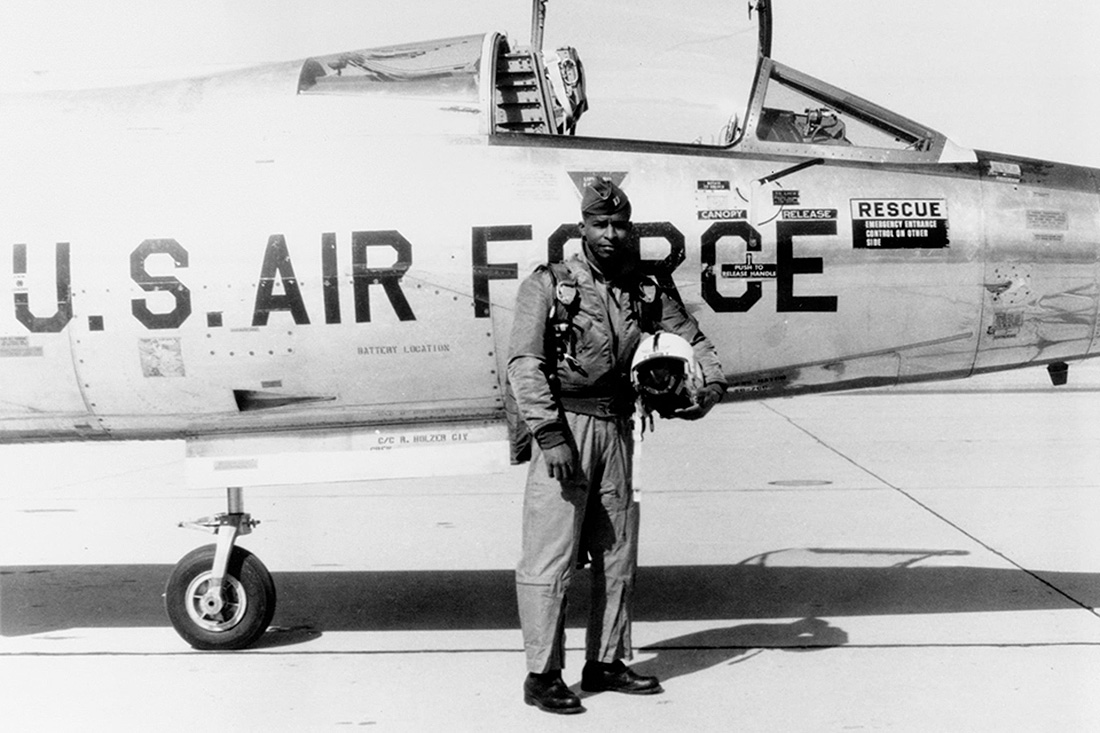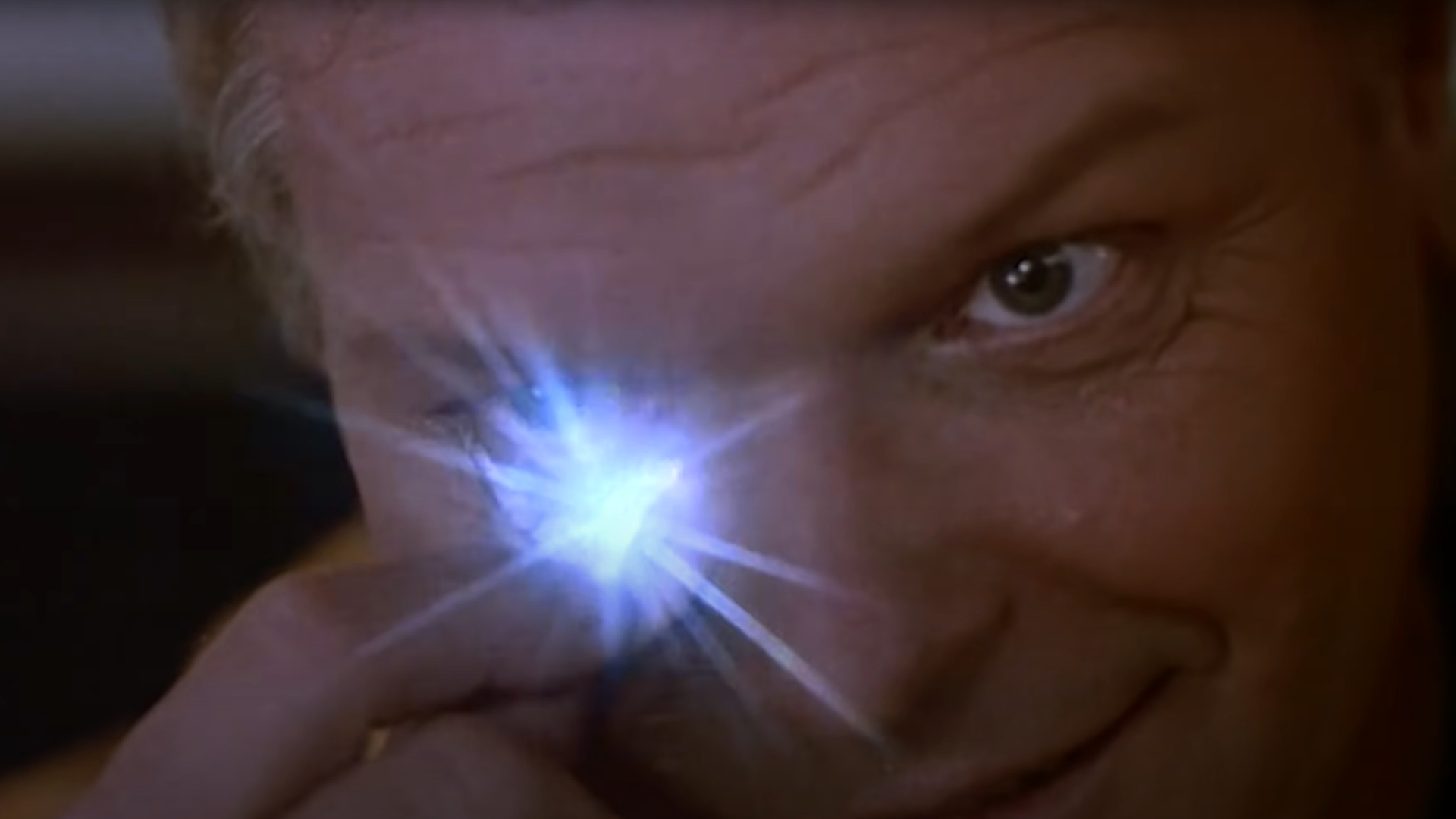Epic 64-Satellite SpaceX Launch Will Honor 1st Black Astronaut with Canopic Jar Sculpture
The first African-American astronaut will soon get a fitting spaceflight tribute, if all goes according to plan.
One of the 64 small satellites flying atop a SpaceX Falcon 9 rocket on the upcoming SSO-A SmallSat Express mission carries a 24-karat-gold jar that encases a bust of Robert Henry Lawrence Jr., IEEE Spectrum reported earlier this month.
In June 1967, the U.S. Air Force selected Lawrence — who had already risen to the rank of major within that military branch — for the Manned Orbiting Laboratory (MOL) program. A joint effort of the Air Force and the National Reconnaissance Office, MOL aimed to establish small, crewed space stations in Earth orbit that would help the U.S. spy on the Soviet Union and other rivals. [Manned Orbiting Laboratory Declassified: Inside a US Military Space Station]
But Lawrence died less than six months later, when his F-104 Starfighter supersonic jet crashed during an exercise at Edwards Air Force Base in California. Lawrence was helping train another MOL astronaut in landing techniques, according to a biography penned by NASA officials.

Though the administration of President Richard Nixon canceled MOL in 1969, Lawrence likely would have made it to orbit eventually, had he survived the accident. He was just 32 at the time of his death, and seven similarly young MOL astronauts — Karol Bobko, Robert Crippen, Gordon Fullerton, Henry Hartsfield Jr., Robert Overmyer, Don Peterson and Richard Truly — transferred into NASA's ranks after MOL was dustbinned.
It's "virtually certain" that Lawrence would have transferred as well, NASA officials wrote in the biography. "All in that group flew on the space shuttle in the 1980s; it is easy to imagine that Lawrence would have piloted one of the early space shuttle missions," they added.
(NASA's Guion Bluford Jr. became the first African-American astronaut to reach space when he served as a mission specialist on the space shuttle Challenger in 1983.)
Breaking space news, the latest updates on rocket launches, skywatching events and more!
The tiny satellite honoring Lawrence is called Enoch and is owned by the Los Angeles County Museum of Art, IEEE Spectrum reported. The artist behind the project is Tavares Strachan, who wanted to give the pioneer his due.
"[Lawrence is] someone who has a mostly untold story, who I look at as a hero but who wasn't necessarily considered one when I was a child in school," Strachan told IEEE Spectrum. "A black guy doing space exploration with the U.S. government wasn't a normal situation in 1960s America. He was traversing a very difficult time."
Enoch isn't the only unconventional payload flying on SSO-A, which is scheduled to launch Sunday (Dec. 2) from California's Vandenberg Air Force Base. (The liftoff was originally planned for Wednesday, Nov. 28, but it was delayed due to strong winds.)
For example, another art project, called Orbital Reflector, is designed to draw the eyes of millions of people skyward (temporarily — the shiny mini-sat will de-orbit and burn up in Earth's atmosphere within a few weeks of its launch, project team members have said). And the Elysium Star 2 cubesat will carry the cremated remains of customers into orbit.
SSO-A, which has been organized by Seattle-based company Spaceflight, is notable not just for the number, diversity and quirkiness of its satellites. The mission also involves a Falcon 9 with a twice-flown first stage. SpaceX has re-flown first stages of the two-stage Falcon 9 plenty of times as part of the company's push for rapid and extensive reusability, but no core has ever launched on three separate orbital missions.
The 64 payloads aboard SSO-A do not represent a record, by the way. An Indian PSLV rocket lofted 104 satellites during a February 2017 launch.
Mike Wall's book about the search for alien life, "Out There" (Grand Central Publishing, 2018; illustrated by Karl Tate) is out now. Follow him on Twitter @michaeldwall. Follow us @Spacedotcom or Facebook. Originally published on Space.com.
Join our Space Forums to keep talking space on the latest missions, night sky and more! And if you have a news tip, correction or comment, let us know at: community@space.com.

Michael Wall is a Senior Space Writer with Space.com and joined the team in 2010. He primarily covers exoplanets, spaceflight and military space, but has been known to dabble in the space art beat. His book about the search for alien life, "Out There," was published on Nov. 13, 2018. Before becoming a science writer, Michael worked as a herpetologist and wildlife biologist. He has a Ph.D. in evolutionary biology from the University of Sydney, Australia, a bachelor's degree from the University of Arizona, and a graduate certificate in science writing from the University of California, Santa Cruz. To find out what his latest project is, you can follow Michael on Twitter.
